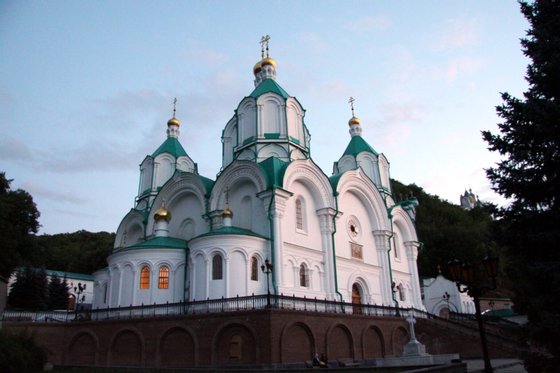Being bombed by Russian forces and still remaining faithful to Moscow and the Russian Orthodox Church. This is the paradox in which a monastery located in the Donetsk region lives, where, according to the Ukrainian authorities, four people – including monks, priests and nuns – have already died after the bombing of the Kremlin.
The story is told by The New York Times, which details that attacks on the religious complex (The Holy Mountains Lavra of the Holy Dormition) are regular, speaking of “terrifying screams” and “metal-sounding explosions” that echo through of the courtyard of the monastery.
In the monastery, which is located on the banks of the Seversky Donets River, in eastern Ukraine (near the city of Sviatohirsk), and which may have originated between the 15th and 16th centuries, more than 100 monks lived until recently. The residents were joined, following the Russian invasion of Ukraine and the start of military clashes in the east of the country, by a few hundred refugees. It is difficult to say with certainty the number of civilians, since the Ukrainian authorities point to some 800 refugees, of whom about 300 are children.
Both these refugees and the priests, monks and nuns remain faithful to the Russian Orthodox Church and Patriarch Cyril I, as in many other Ukrainian parishes, which have not cut the historical umbilical cord with Moscow. The New York Times even quotes a nun from this monastery, Sister Ioanna, who approves of the attacks on the monastery where she lives: “Yes, it is true that they bomb the monastery, but they are probably just following orders. We also pray for them, asking them to realize what they are doing.

Old image of the monastery, before the Russian invasion, published by the Ukrainian Institute
This is not the first convulsive period experienced in the monastery. Its existence was already in danger both in the 18th century (when Catherine II ordered its closure) and in the early 20th century (when many monks were beaten and killed by the Bolsheviks, before it was closed and transformed into a sanatorium serving those then worked in the Donbass) or before the First World War, when it was attacked by the Soviets, who turned it into a recreation center (with a cinema and everything).
According to the Public Institute of Ukraine, a public body under the tutelage of the country’s Ministry of Foreign Affairs, the monastery’s own geography helped its survival, as it was always “protected by the river on one side and by the forest on the other.” for the other. other”, which allowed him to “repel enemy attacks”. It has been attacked many times, but “no one has been able to destroy it”; after each attack, the monastery invariably ended up being rebuilt.
Source: Observadora
